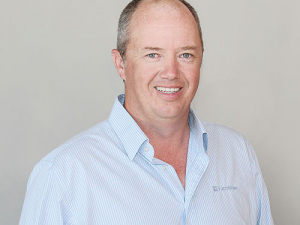These three issues are some of many we are tested on and any one of them could result in demerits or a grade, thereby lowering our income.
We also need to be aware of regulation changes on feeding (FEI) and milk cooling for next season. What we have always done is often not the way of the future. We need to understand and adapt.
The key point is that we are in the business of providing high quality food to people around the world. If we cannot provide a high quality product then our respective dairy companies cannot provide one either.
Reputation in food safety and quality is paramount when securing the best possible prices for our milk. Below are some key short points on providing some of the highest milk quality standards in the world.
Note that some of the values below are specific to Fonterra as I am more familiar with their requirements. These values may be different depending on your milk processor.
Milk chilling
The new MPI requirements come into effect on June 1, 2018.
Under the new standards, milk must:
Be cooled to 10˚C or below within four hours of the start of milking
Be cooled to 6˚C or below either within six hours from the start of milking or two hours from the end of milking
Not exceed 10˚C during subsequent milkings.
A simple check of your system should identify the area you need to focus on to meet the new standards.
Start with your water temperature into the plate cooler
Temperature tabs can be sourced from your milk processor
What is your plate size, what is the temperature of milk out of the cooler?
Is your plate size sufficient?
Is your chiller size sufficient?
If so, water chilling may be your best option
If not, a larger chiller may be your best option
Is your power transformer large enough?
Research these options and discuss them with many providers who will be able to provide quotes. I have seen costs range from $5000 to $70,000 onfarm.
Some time spent researching information to obtain the correct advice and installation can be a high $/ hour rate saving to you. Most dairy companies have more information on this topic to aid your research. Use a trusted installer.
Milk quality
Most milk quality issues onfarm are management or people issues.
Plant issues do occur but often we identify issues too late then react once the grade is already incurred; whereas proactive management will avoid most issues.
Key points:
Training – even if we think we know it all; revise at least annually
Regularly inspect milking plants
Use correct wash cycles every day
Check and ensure wash cycles are working properly. Too often I hear “the purge wash was playing up and didn’t clean properly”; that is not the purge system’s fault; we can monitor these things at a glance on a daily basis
Ensure all staff are familiar with plant systems
Check milk sanitary traps (if applicable)
Open pulsation line daily; are there milk deposits?
It is up to us to complete our plant checks and determine whether our cowshed is operating optimally.
Most dairy companies provide you an early warning system, and some of the tests take time to confirm; we cannot control that. What we can control is our monitoring via alerts, dockets and internet.
There is lots of information and prevention methods available from your dairy processor; spend some time training yourself and your staff. Take nothing for granted; “this has never happened to me before” will still incur penalty for the grade.
Fat Evaluation Index (FEI)
FEI has been a talking point in the last 12 months. Our first reaction is generally scepticism followed by anger at a perhaps ‘nanny state’ and what a lack of PKE inputs at certain times of the year may have on our profitability, production and overall performance.
Once we square all of that away and focus on the outcome, we can then determine how FEI grading might affect our farm’s strategy.
FEI is not a PKE test, although PKE has a far greater impact on fatty acid profile than any other feed source. We have now had quite some time – if we are feeding high fatty acid feeds – to determine where our farm system sits on the grading profile.
A and B grades will not require any changes.
C and D grading will certainly require some planning and thought on future management.
Key points:
Cow breed will affect FEI outcome. For any given input, Jerseys will have higher FEI reading than crossbreeds followed by Friesians
FEI will be higher for any given input the lower the LWT is
A higher proportion of fatty acid input as a percentage of total intake will increase FEI
As milk volumes decrease FEI will increase eg 3kg PKE in late autumn will increase FEI higher than 3kg PKE in spring
There are no other feeds that reverse the effect of PKE
I have seen large variations in grade outcome between farms: 3kg PKE to a Jersey herd equated to C grading; 4kg PKE to a high LWT Friesian herd equated to B grading.
Also a combination of feeds, e.g. 2kg PKE combined with 5kg of summer turnips will have an effect on FEI.
Monitor your graphs regularly. It is important to know how your farm may react. I understand the criteria for grading are due to be released very shortly.
Ensure you are informed if your farm system might be affected.
All the topics above are manageable. We need to spend the time required to understand and adapt to those changes.
















